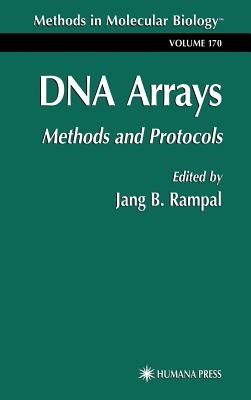
- We will send in 10–14 business days.
- Publisher: Humana
- ISBN-10: 089603822X
- ISBN-13: 9780896038226
- Format: 16.1 x 23.5 x 2.1 cm, hardcover
- Language: English
- SAVE -10% with code: EXTRA
DNA Arrays (e-book) (used book) | bookbook.eu
Reviews
Description
Microarray technology provides a highly sensitive and precise te- nique for obtaining information from biological samples, with the added advantage that it can handle a large number of samples simultaneously that may be analyzed rapidly. Researchers are applying microarray technology to understand gene expression, mutation analysis, and the sequencing of genes. Although this technology has been experimental, and thus has been through feasibility studies, it has just recently entered into widespread use for advanced research. The purpose of DNA Arrays: Methods and Protocols is to provide instruction in designing and constructing DNA arrays, as well as hybridizing them with biological samples for analysis. An additional purpose is to p- vide the reader with a broad description of DNA-based array technology and its potential applications. This volume also covers the history of DNA arrays-from their conception to their ready off-the-shelf availability-for readers who are new to array technology as well as those who are well versed in this field. Stepwise, detailed experimental procedures are described for constructing DNA arrays, including the choice of solid support, attachment methods, and the general conditions for hybridization. With microarray technology, ordered arrays of oligonucleotides or other DNA sequences are attached or printed to the solid support using au- mated methods for array synthesis. Probe sequences are selected in such a way that they have the appropriate sequence length, site of mutation, and T .
EXTRA 10 % discount with code: EXTRA
The promotion ends in 19d.00:33:16
The discount code is valid when purchasing from 10 €. Discounts do not stack.
- Publisher: Humana
- ISBN-10: 089603822X
- ISBN-13: 9780896038226
- Format: 16.1 x 23.5 x 2.1 cm, hardcover
- Language: English English
Microarray technology provides a highly sensitive and precise te- nique for obtaining information from biological samples, with the added advantage that it can handle a large number of samples simultaneously that may be analyzed rapidly. Researchers are applying microarray technology to understand gene expression, mutation analysis, and the sequencing of genes. Although this technology has been experimental, and thus has been through feasibility studies, it has just recently entered into widespread use for advanced research. The purpose of DNA Arrays: Methods and Protocols is to provide instruction in designing and constructing DNA arrays, as well as hybridizing them with biological samples for analysis. An additional purpose is to p- vide the reader with a broad description of DNA-based array technology and its potential applications. This volume also covers the history of DNA arrays-from their conception to their ready off-the-shelf availability-for readers who are new to array technology as well as those who are well versed in this field. Stepwise, detailed experimental procedures are described for constructing DNA arrays, including the choice of solid support, attachment methods, and the general conditions for hybridization. With microarray technology, ordered arrays of oligonucleotides or other DNA sequences are attached or printed to the solid support using au- mated methods for array synthesis. Probe sequences are selected in such a way that they have the appropriate sequence length, site of mutation, and T .


Reviews